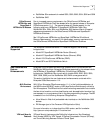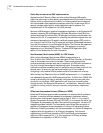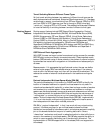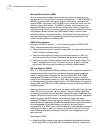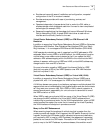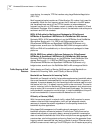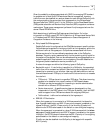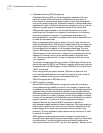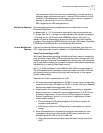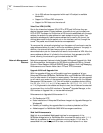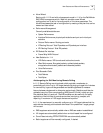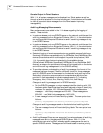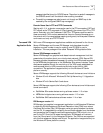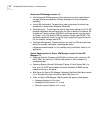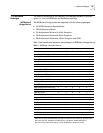
New Features and Feature Enhancements 17
may cause some flows to be locked out of bandwidth if a simple tail drop is
employed when the queue becomes full. However, RED works well only with
compliant TCP implementations that backs off when network congestion is
detected. It has no effect on non-IP or UDP traffic.
RED is supported on CBQ class queues only.
Dial Service Features Dial service features include increased asynchronous baud rate for the all
Enterprise OS platforms.
In releases prior to 11.3, the maximum baud rate for asynchronous ports was
57.6 kbps. With the 11.3 release, the maximum baud rate has been increased to
115.2 kbps only for the OfficeConnect NETBuilder platform. With the 11.4
release, this feature is expanded to support all other platforms with FlexWAN
interfaces. This includes the NETBuilder II with the 4-port HSS module, SuperStack
II NETBuilder SI, PathBuilder S5xx, and PathBuilder S400 devices.
Voice & Multiservice
Features
Voice and multiservice features include voice over Frame Relay, and voice over
VPN. These features are currently available on the PathBuilder S400 platform only.
Voice Over Frame Relay (VoFR)
With Frame Relay already providing a flexible and efficient means of transferring
data, Voice Over Frame Relay (VoFR) consolidates voice and voice-band data (for
example, analog modems and fax messages) with data services. VoFR lowers the
cost of calls while increasing the utilization of network resources and maintaining
the reliability of an existing Frame Relay network.
With 11.4, VoFR is available in the PathBuilder S400 WAN convergence switch.
The VoFR capabilities will handle peer-to-peer (end-user to end-user) VoFR voice
call signaling across the network, providing real-time delivery of voice signals
without excessive delay.
Features of the 3Com implementation of VoFR:
■ All voice payloads are encapsulated in the FRF.11 formats. Voice and data share
the same virtual circuit (VC) based on the FRF.11 Annex J (The Use of Reserved
Subchannels) capabilities as authored by 3Com.
■ Fragmentation can consume CPU processing power resulting in degraded
system performance. Unlike other vendors implementation of VoFR, 3Com's
proprietary Fragmentation Control Protocol (FCP) is designed to support
dynamic fragmentation control to turn on-and-off fragmentation at each
communicating endpoint.
■ 3Com proprietary VoFR signaling based on Q.931allows dynamic call
connection and teardown.
■ VoFR recovery is built into VoFR signaling to handle system or network
outage.
■ Voice call establishment is regulated by bandwidth requirements of voice
compression between two communicating DSP peers, as well as by the
available bandwidth (CIR) of the VC at each end.
■ Voice calls between remote offices can be switched through central site
VoFR.



